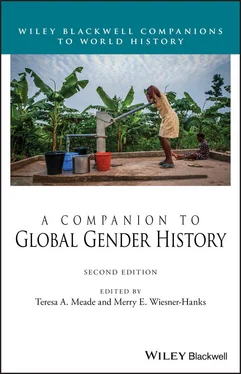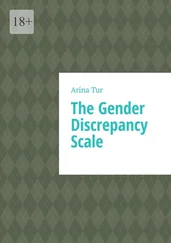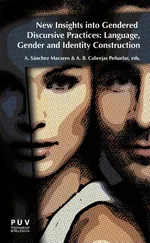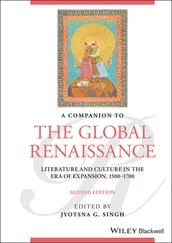But the ideology of gender, like any other ideology, is never static. Changes taking place in politics bring about changes in ideology as well, exposing inconsistencies and contradictions. Because ideologies are always uneven and often contradictory in their applicability to or effect on various people in society, they produce possibilities for resistance to them, possibilities for change. In the years leading up to the outbreak of civil war in England in 1642, for example, proponents of royal absolutism and of parliamentary supremacy in government developed a series of justifications for their respective positions. Supporters of Charles I put forward arguments based on divine right and patriarchy, but they also resorted, from time to time, to contract theory to make the case that the people of England, Scotland, and Wales had ceded all of their rights to the monarch when they made their original contract of subjection to the ruler. They compared this imaginary “social contract” with the monarch to that of the marriage contract between husband and wife, whose contractual nature – which virtually all Britons accepted without question – consisted only of the consent that the parties to it gave upon taking their vows. The marriage contract established a relationship of male governance and female obedience, and it could not be revoked. Royalists were on firm ideological ground in making such an argument about marriage; by drawing an analogy to it, they were able to insist that, just as in marriage, the agreement to obey the social contract with the monarch, once entered into, was binding. Resistance to the monarch by his subjects was akin to a wife violating her marriage vows; both were a sin against God, no matter how egregious the abuse a husband might heap upon her. Just as there was a covenant “instituted by God betweene King and People,” wrote the royalist Sir Dudley Digges in 1643, “so there is a contract between Husband and Wife, the violation of which on the man's part doth not bereave him of his dominion over the woman”(Shanley, 1979). The idea that subjects might justifiably rebel against their monarch was as absurd as the idea that a wife might end her subjection to her husband either by their mutual agreement to divorce or because he abused her.
The best known and most influential of the works bearing on the family, John Locke's Two Treatises on Government , published in 1688, placed familial relations on the ground of contract theory based in natural law. Locke argued that the parties to the contract might stipulate the terms of their relationship within marriage. He further insisted that because all human beings – men and women alike – are free in a state of nature, there could exist no predetermined terms or conditions bearing on the parties to marriage, except that of producing and caring for children. As long as the obligations to care for the children born to a married couple continued to be met, that couple might terminate their marriage contract if the ends to which it had been directed were completed. Moreover, husbands did not, Locke claimed, enjoy any absolute sovereign power in marriage by virtue of their sex. He could not completely shrug off societal norms of male supremacy in marriage, noting that where husband and wife disagreed about how their “common Interest and Property” should be administered, “it naturally falls to the Man's share, as the abler and stronger,” to make the final determination. Nevertheless, he qualified the exercise of a husband's power to areas of common concern, and argued that these, too, might be regulated by contract. Locke was far in advance of other thinkers of his time in regard to marriage and the relationship of husband and wife within it, but his work did not immediately change the way society thought about marriage or the laws that regulated it. However, in conjunction with the acceptance of contract theory that accompanied and justified the removing of James II from the throne and the replacing of him with William and Mary in the Glorious Revolution, it did open the door to possibilities of divorce (Shanley, 1979). So powerful were Locke's philosophical formulations against domestic patriarchy that the Church of England felt compelled to alter its doctrine in 1705 to acknowledge the mutual and reciprocal rights and obligations of men and women in marriage. In 1753, the Marriage Act gave parliament jurisdiction over marriage law, making possible a slow liberalization of divorce laws. In the nineteenth century, feminists and reformers called upon his individualistic assumptions about human beings to effect changes in property law and marriage law that directly benefited women.
Locke's Two Treatises of Government both reflected and contributed to a developing split between public and private virtue in the minds of contemporaries. Its theoretical formulations separated civic or public authority on the one hand, and familial or private authority on the other, providing philosophical legitimation for closing down the possibilities women had to participate in political affairs. In rebutting earlier patriarchal arguments based on analogies of state and familial power, Locke distinguished between the state and the family as civic entities, relegating the family to a private sphere disconnected from politics. In separating the two, and in insisting that qualification for participation in the public political sphere rested on property ownership and independence of the control or influence of others, Locke effectively excluded women from political activity. Married women, we have seen, could not own property under common law. Moreover, even if women did own property, under an equity settlement or as femes sole , they were considered dependent upon men within the family and therefore disqualified from public life. Henceforth, in ideological terms, women would occupy the private sphere of home and family, where they could best display the moral and especially sexual virtue now expected of them; men would demonstrate virtuous behavior in the public sphere of work and politics.
French revolutionaries also fashioned a story about family relationships in the process of overthrowing a patriarchal, absolute monarch and usurping his power, but they legitimated their actions in somewhat different familial imagery than did the English. Whereas English notions of social contract, at least in the writings of Locke, drew upon analogies to the relationship of husband and wife, French thinking about a new political ordering emphasized the relationship of fathers to sons, as the widely disseminated and powerful revolutionary slogan, “Liberty, Equality, Fraternity,” suggests. As we have seen in the case of England in the seventeenth century, the vast majority of the French in the eighteenth century regarded their monarch as a father who ruled over a country depicted as a large family. In order for eighteenth‐century reformers to contemplate a challenge to the theoretically unrestricted power and authority of their ruler, they would first have to imagine, consciously or unconsciously, placing restrictions on the theoretically unlimited power of fathers over their children. Indeed, as one historian has shown (Hunt, 1992), decades before the revolution broke out in 1789, novels and paintings began to show harsh, oppressive fathers in a negative light and to highlight a new kind of fatherhood in which care, concern, and affection for children prevailed. The trend toward representations of the “good father” prepared the collective psychological ground for attacking absolute monarchical authority. Just as tyrannical fathers could not be tolerated, so too must despotic kings be eliminated.
Once the revolutionaries had curbed the power of the monarch with constitutional checks on his authority, they turned to making legislation that would limit the power of fathers over their children. They established family councils that could make decisions previously enjoyed by fathers exclusively; eliminated so‐called lettres de cachet through which fathers could imprison children of any age; made inheritance equal among all children, girls and boys alike, ending the system of primogeniture that gave preeminence to the eldest son and future patriarch; and lowered the age of consent to 21 for women and 25 for men so that children might marry as they wished, free of their fathers’ control. They also gave women equal rights to divorce, but they stopped short of acknowledging them as citizens. Women, no matter what status they might enjoy, could not vote. “Fraternity” did not embrace “sorority” when it came to participation in politics and law‐making, a situation against which many women vociferously protested.
Читать дальше












